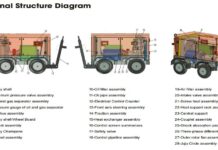A scientist from Kansas State University in the US claims that a lack of awareness about energy-saving features in commercial buildings is preventing facilities from benefiting.
Assistant professor at Kansas State University Julia Day has published a paper stating that, in the absence of proper training, many occupants do not know how to use the energy-saving features installed in more than a third of new commercial buildings in the US.
When Julia Day carried out the study as a doctoral student at Washington State University, she found that occupants who had received effective training on high-performance buildings were more satisfied with their work environments.
Day worked with WSU School of Design and Construction professor David Gunderson and studied more than 50 high-performance buildings across the country.
Including architectural and engineering plans, Day gathered data, conducted interviews and surveyed building occupants to discover how people were being trained in energy-efficiency.
The study found that energy-saving instructions were being communicated in a meeting or through general emails, and many people did not understand or realise how their actions could affect the building’s overall energy use.
One LEED gold building had lights throughout indicating the best times of day to open and close windows in order to take advantage of natural ventilation, and a green light indicated when it was time to open windows.
Day said: “I asked 15 people if they knew what the light meant and they all thought it was part of the fire alarm system.
“There’s a gap, and people do not really understand these buildings.”
“With stricter energy codes, the expectations are that buildings will be more energy-efficient and sustainable.”





























